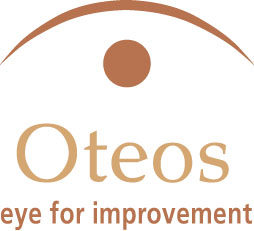Stop the Silence – Keeping your employees engaged…
 Research shows that communication is a vital component for a high-functioning organization that wishes to empower employees and thrive as a business, regardless of the industry. Unfortunately, there seems to be a misconception by many in management roles that employees that don’t speak their mind and who go along with the management’s direction are more valued than those that express themselves. While these silenced employees may be perceived as easier to manage, the opposite is actually true. Employers must provide a platform for employees to have a voice. This not only keeps employees engaged but increases performance. It promotes creativity and stifles groupthink leading to greater innovation.
Research shows that communication is a vital component for a high-functioning organization that wishes to empower employees and thrive as a business, regardless of the industry. Unfortunately, there seems to be a misconception by many in management roles that employees that don’t speak their mind and who go along with the management’s direction are more valued than those that express themselves. While these silenced employees may be perceived as easier to manage, the opposite is actually true. Employers must provide a platform for employees to have a voice. This not only keeps employees engaged but increases performance. It promotes creativity and stifles groupthink leading to greater innovation.
Several years ago, my former organization was exploring a new health care delivery model. This change was based on the Southcentral Foundation’s NUKA model of care that focused on patient-driven care. Part of the initial stages of this process included sending a delegation to a week-long training at the Southcentral Foundation in Anchorage, Alaska. My director, at the time, asked if I would be willing to attend. Naturally, I agreed. Who doesn’t want to spend a week in Alaska at the boss’s expense? The experience was invigorating and ignited my passion for healthcare again. Later my director confessed that the reason she invited me to participate was due to my outspoken nature. She knew if she didn’t have my buy-in, she would likely have some push-back. She also understood that I could be her biggest ally in the implementation process if I realized the benefits of the change. Instead of silencing my voice, she understood the informal leadership role I had on the team and used it to benefit the organization.
Unfortunately, many organizations miss out on the ideas and valuable input that employees have to offer. I’ve never understood why, but some organizations intentionally silence their people. Perhaps management feels it is easier to manage or control situations, or possibly the manager is treated the same from those in the next management level up. Either way, this culture of silence is counterproductive and diminishes the organization’s opportunity for sustainable growth.
Although high-performing organizations promote a culture of open communication, recent research shows that the majority of employees fear speaking up and that those that did speak up were less likely to move up the ladder. Research also shows that suffering in silence leads to adverse outcomes for the organization. It causes low motivation, disengagement, alienation, and, low morale.
The benefits of employee input are numerous. Employees work on the front-lines and are most familiar with the products, customers, and processes. This day to day exposure to the workings of the organization offers insights that those at the management level may not be aware of. Coming from a healthcare background, I will use the nurse-doctor analogy. The nurse spends twelve hours with the patient while the doctor may spend ten minutes. Who knows the patient better? Not that the nurse knows better than the doctor, but they will know more about the patient’s symptoms and overall condition. Ultimately, the doctor makes the decision, but without input from the nurse, the doctor wouldn’t have all of the information to make the best decision. Without input from employees, management will not have all the information required to make the best decisions for the organization.
There are multiple strategies that organizations can use to encourage employees to contribute their opinions. First and foremost is leadership modeling behaviors that encourage and support active two-way communication. By reducing formality and power cues, the leader assumes a collaboration role rather than a dictator role, making them more approachable. Avoid speaking to only those employees that you are comfortable with. This alienates the rest and promotes favoritism, which, in turn, silences your staff.
Make asking input part of a daily routine and then actually do something with the information. Twenty-five percent of employees do not share ideas or information as they feel that nothing will be done with it. Maybe it isn’t valuable today, but it may be tomorrow. Assuming that employees will speak up on their own is a gamble. Perhaps previous experiences or lack of confidence will stop them from presenting what could be an amazing idea. By not asking for their input, you are essentially silencing them.
To encourage diversity in your cohesive team, bring up controversial topics, and encourage debate. Do not nit-pick or demand a plan or data during the brainstorming phase. Allow the team to be creative and follow-up with data to support their suggestions. These approaches encourage active dialogue and set the tone for a safe environment for honest communication.
Promoting a culture of recognition encourages continuous input from employees. Staff that feels appreciated for the achievements will gain confidence within the company. The more confident an employee is, the more likely they are to offer input. Commend staff for their suggestions and for asking tough questions. Finally, reward and recognize employees that offer input that contributes to successes.
In conclusion, cultures of dialogue not only result in more engaged employees but the bottom-line results that organizations strive to achieve. When organizations utilize the full potential of their staff, it diminishes creativity and productivity. Worse yet, silencing employees leaves untapped potential, and eventually, that potential will go elsewhere to an environment that appreciates them.
Even if you don’t intentionally silence your team, I challenge managers to look at their own behavior. What can you do to encourage employee input? Is there a behavior that you can change to stop the silence?

Add a Comment